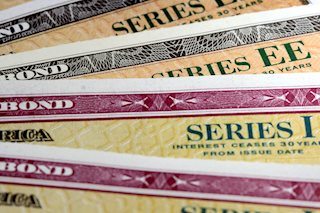Bonds or currencies: Which holds the key? Fed debates, ECB hawkishness, and market dynamics
|
Markets
US treasuries extended their underperformance against German Bunds yesterday as some data beats strengthen the notion that the US customer isn’t backing down yet, hinting at a more resilient economy. Core US retail sales rose by 0.6% M/M with the control group even gaining 0.7% M/M and providing a solid start to Q2. The NAHB housing index increased a fifth consecutive time to the highest level since July (see News & Views). More Fed governors weighed in the debate, highlighting the toss-up that the June policy meeting will be. NY Fed Williams seems in favour of a wait-and-see approach like Chicago Fed Goolsbee and to a lesser extent Dallas Fed Logan. Atlanta Fed Bostic will let the data decide while Minneapolis Fed Kashkari and Richmond Fed Barkin believe there’s no barrier to further rate increases. Cleveland Fed Mester joined that hawkish camp: “At this point, based on the data I have so far, given how stubborn inflation has been, I can’t say I’m at a level of the Fed Funds rate where it’s equally probably that the next move could be an increase or a decrease”. US yields rose by 1.1 bp (30-yr) to 7.3 bps (2-yr). German yields added 3.9 bps (30-yr) to 6.1 bps (5-yr). Mixed German ZEW investor sentiment went unnoticed. Hawkish Austrian ECB member Holzmann said that he preferred a 50 bps rate hike earlier this month and that the ECB shouldn’t pause hikes before they reach 4%. After last month’s decision, he thinks that the bar to returning to 50 bps rate hikes is high. The dollar overall profited from the yield advantage with the trade-weighted greenback (DXY) testing the recent high at 102.75. EUR/USD approached the sell-off low at 1.0846, before closing at 1.0862. US stock markets yesterday underperformed (Dow -1%) with risk aversion creating some additional USD-safe haven flows. The US debt ceiling stalemate remains firmly in place with US Treasury Secretary Yellen’s warnings proving futile for the moment. Apart from the US T-Bill and CDS market, the overall market impact remains low even as we’re only a fortnight away from the assumed “X-date”. Previous debt ceiling episodes learnt that a solution will eventually follow. Today’s eco calendar is extremely thin with only US housing starts and building permits. It doesn’t become much better on Thursday and on Friday, making way for central bankers and especially risk sentiment to set the tone for trading. Current trends are sluggish stocks, weakness in US Treasuries and a better dollar.
News and views
Q1 Japanese growth rebounded more than expected. Activity during the January-March quarter expanded at an annualized rate of 1.6% (0.4% Q/Q), beating expectations for a more modest growth of 0.8%. Activity was mainly supported by a rebound in private consumption (0.6% Q/Q) and business spending (0.9% Q/Q) as consumer spending regained traction post-Covid. Tourism was an important factor in the consumption revival. Net exports subtracted 0.3 ppts from growth as exports (-4.2%) declined faster than imports (-2.3%). The Q1 GDP price deflator printed exactly at 2%, close to expectations. The figure for the previous quarter was downwardly revised from 0.1% (QoQa) to -0.1%, which brought to economy in a technical recession in the second half of last year. A rebound in domestic demand as such is a positive development. However, the Q1 data probably needs confirmation for the BOJ to change its ultra-easy monetary policy. Markets this morning aren’t preparing for such move as the 10-y yield dropped 3 bps to 0.367%. The yen also weakens with USD/JPY extending recent uptrend (136.65).
US NAHB Home Builders sentiment unexpectedly increased further from 45 in April to 50 in May. According the NAHB statement “Limited existing inventory, which has put a renewed emphasis on new construction, resulted in a solid gain for builder confidence in May even as the industry continues to face several challenges, including building material supply chain disruptions and tightening credit conditions for construction loans”. The May rise in the index was the fifth consecutive monthly rise. It was the first time for the index to reach the 50-level since July 2022.
Information on these pages contains forward-looking statements that involve risks and uncertainties. Markets and instruments profiled on this page are for informational purposes only and should not in any way come across as a recommendation to buy or sell in these assets. You should do your own thorough research before making any investment decisions. FXStreet does not in any way guarantee that this information is free from mistakes, errors, or material misstatements. It also does not guarantee that this information is of a timely nature. Investing in Open Markets involves a great deal of risk, including the loss of all or a portion of your investment, as well as emotional distress. All risks, losses and costs associated with investing, including total loss of principal, are your responsibility. The views and opinions expressed in this article are those of the authors and do not necessarily reflect the official policy or position of FXStreet nor its advertisers.